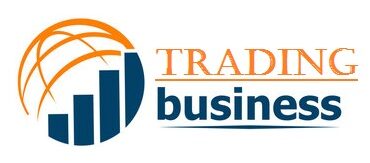The eCommerce sector has experienced massive growth over the years. Thus, many direct-to-consumer firms have had the chance to develop their brands and boost profitability significantly.
Businesses must have enough inventory to handle the escalating demand. This can be assisted by planning your inventory and demand forecasts.
Inventory planning establishes the ideal stock level required to satisfy demand and achieve your brand’s revenue targets. Demand forecasting is the first step in this process, and stock replenishment is the last.
Planning your inventory correctly will guarantee that your retail brand only buys items that will sell. By doing this, you can avoid expensive errors like stockouts and deadstock (excess inventory that isn’t selling).
To put it bluntly, the accuracy of your inventory plan depends entirely on the demand predcition upon which it was based. To determine how much inventory people want to purchase, accurate demand forecasts consider past sales data, current stock levels, and current inventory trends.
Top-Down Approach to Inventory Planning and its Problems
Top-down inventory planning presumes that the connection between your inventory and sales is linear. In other words, it attempts to align inventory plans with revenue growth rather than the reverse.
According to the top-down strategy, individual demands are generated based on a share of the total for each category, warehouse, channel, store/dark store, and SKU level after the predictions are made by demand planners at the highest level. The smallest-scale supply chain events are not taken into account in these estimates. This approach has a serious drawback since, even if high-level predictions are accurate, inventory operations can’t move further without precise granular-level predictions. The ratios themselves might also alter, particularly if one product starts to sell faster than the others as a result of marketing or changes in the demand curve.
Your inventory cannot be optimized for unit economics via top-down inventory planning (or the revenue and costs of selling a single unit).
It would be fine in an ideal world as you could take your time selling through this extra inventory.
However, the longer you keep these products, the more expenses you will rack up. On average, the administration, storage, insurance, and other expenses for dead stock are 30% higher than the inventory value.
What Is Bottom-Up Inventory Planning?
In contrast to top-down inventory planning, the bottom-up approach leverages your demand estimate to identify the minimal stock levels your business needs. Then, it carefully builds on that strong foundation of essential growth hypotheses.
Forecasts are made using the more detailed data that was acquired via the bottom-up approach. SKU along with the dark shop level will be the most granular level for a quick-commerce company, whilst SKU, Channel, and Depot levels will be used for a DTC company. Then, these detailed demand forecasts are pooled to provide forecasts of overall demand. This approach forecasts demand as closely as is practical to the client before rolling up to the top for more accurate forecasting statistics. Bottom-up strategies are more useful and are less likely to be biassed or inaccurate by people.
Whether your retail brand chooses to sell to a wholesale partner, through Amazon, or on your e-commerce website is irrelevant. Setting yourself up to expand successfully and efficiently requires keeping a tight check on the supply chain, inventory levels, and demand planning.
The timing and frequency of your product replenishment are crucial for making the best use of your working capital and accelerating the development of your brand.
Brands that successfully implement bottom-up inventory planning have lower levels of deadstock inventory, lower holding expenses, and higher net revenue.
Why Choose the Bottom-Up Approach Instead of the Top-Down Approach?
Bottom-up inventory planning is based on a few minor hypotheses, such as seasonality and month-over-month growth, that are statistically more likely to be accurate. One significant assumption that top-down inventory planning takes a chance on is that inventory and revenue have a linear relationship.
Bottom-up inventory planning is, therefore, far more precise. A top-down forecast may be hundreds of units inaccurate, while a bottom-up one may only be a few wrong units.
Keep the following in mind when deciding between top-down and bottom-up inventory planning:
- Most of the time, growth is nonlinear; therefore, more inventory does not necessarily mean more revenue.
- The SKUs bringing in sales may change over time.
- Your working capital should be invested in fast-selling units rather than held back in inventory.
The automated sorting, recommending, pricing, and promotion of products is made possible by modern inventory planningtools, which take a comprehensive and AI-powered approach. It provides a wealth of information on the SKUs driving conversions and retaining consumers.
You can plan inventory from the bottom up using strong and effective tools to ensure you always have these bestsellers in stock. Additionally, you can do it without using a spreadsheet.
Utilizing inventory planning software, you can create:
- Precise demand projections considering your stock levels, inventory trends, and previous sales information.
- Effortless operational plans that meet your most ambitious sales targets (determined from the bottom up).
- Purchase orders optimized with automated replenishment alerts (so you always order at the perfect time to avoid a stockout).
Real-time data tracking is done using automation tools. With all this in mind, you can quickly adjust your inventory plan if demand unexpectedly moves.
Monitoring your brand’s supply and anticipated demand sets it up for long-term, sustainable growth. By doing this, you can ensure that you aren’t unintentionally tying up working capital in ways that could reduce your overall margins.
Top-down inventory planning may be the ideal choice for brands that are expanding really quickly. This is particularly true if past sales figures need to provide a solid benchmark for your brand’s performance this year. However, bottom-up inventory is the best strategy for the majority of brands.
About the Company
The Ai-powered demand & inventory planning solution – Kronoscope from Fountain9 helps retailers meet customer demand using a buttom up approach. The software can precisely estimate demand for each SKU item and determine the quantities that should be stocked to meet demand adequately. Businesses can adopt a bottom-up approach, meet customer expectations, and generate more substantial revenue with the help of this software.
Infographic Created By Clover, Easy-to-Use POS System For Your Business


